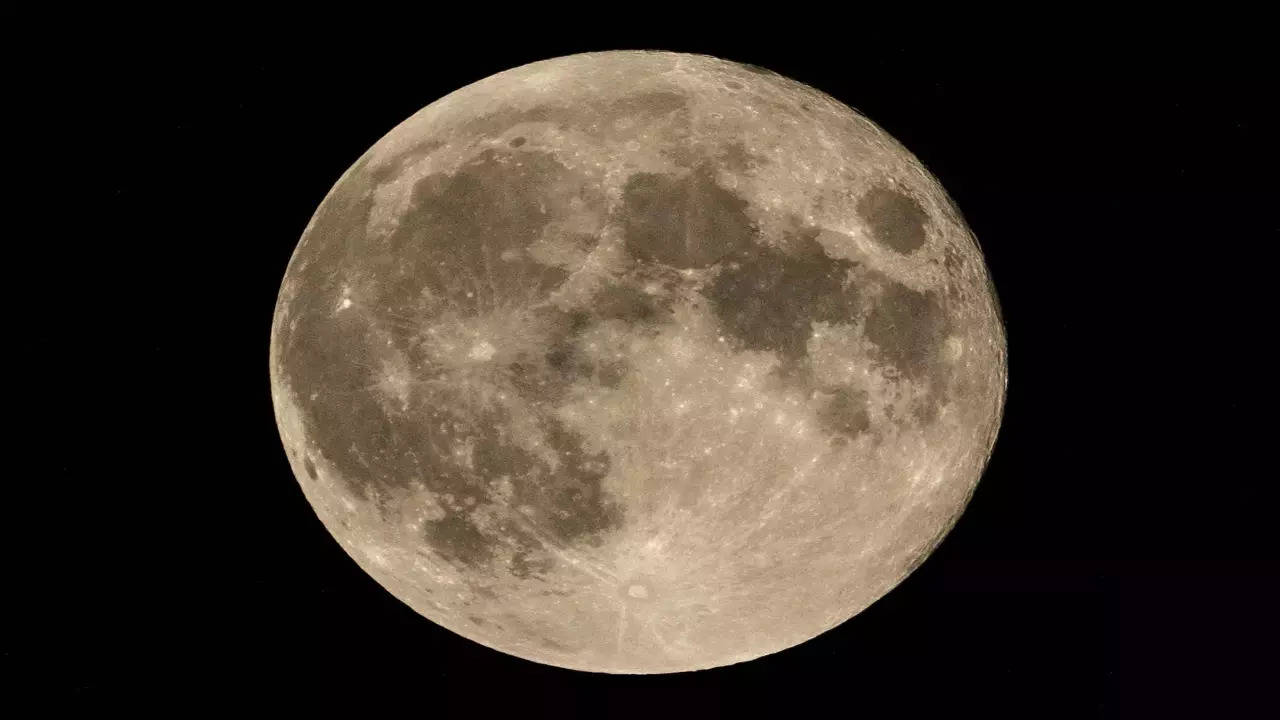
MUMBAI: It will be sci-fi turning into reality on the Moon in 2025.
A Nasa-funded experiment called Lusee-Night (Lunar Surface Electromagnetic Experiment Night) in collaboration with a few US laboratories is launching an experiment on the far side of the Moon in 2025, which will hunt for ancient radio signals from the cosmic Dark Ages over 14 billion years ago.
According to an announcement from the Lawrence Berkeley National Laboratory (Berkeley Lab), which is playing a key role in this ambitious project, the Dark Ages refers to the period of time after the Big Bang when the first stars and galaxies were beginning to form.
With an initial mission span of 18 months, the experiment, which is expected to provide a deeper understanding of the universe, will be flown to the Moon by Firefly Aerospace, a private organisation.
The project is a collaboration between NASA and the Department of Energy, with partners from Berkeley Lab, Brookhaven National Laboratory (lead DOE lab), UC Berkeley and the University of Minnesota.
The Berkeley Lab team has started building the experiment’s antenna that will try to tune in to those ancient radio waves.
“If you’re on the far side of the Moon, you have a pristine, radio-quiet environment from which you can try to detect this signal from the Dark Ages,” said Kaja Rotermund, a postdoctoral researcher at Berkeley Lab, who is working on the antenna.
“LuSEE-Night is a mission showing whether we can make these kinds of observations from a location that we’ve never been in, and also for a frequency range that we’ve never been able to observe,” she stated.
According to the Berkeley Lab, such ancient signals can’t be measured from the Earth because the atmosphere absorbs, refracts and reflects the radio signal before it ever reaches instruments on the ground. Even if it could, the radio signal would be drowned out by noise from our own electronics and communications, it said.
The Moon acts as a shield, blocking out radio waves from the Earth. And by gathering data only during the two-week lunar night, the experiment can also block out radio waves from the Sun.
LuSEE-Night must operate in temperatures around -280 degrees Fahrenheit, then weather an extreme swing to 250 degrees Fahrenheit during lunar day, when it will recharge its batteries. And because the far side of the Moon never faces the Earth, direct communication with the experiment is impossible.
LuSEE-Night will have to send all its data through a relay satellite that passes overhead.
LuSEE-Night will listen for frequencies between 0.5 and 50 megahertz, though it’s likely that future, more sensitive experiments will be needed to find the faint signal. “We’re looking for this very tiny dip that is potentially the Dark Ages signal,” Rotermund said.
A Nasa-funded experiment called Lusee-Night (Lunar Surface Electromagnetic Experiment Night) in collaboration with a few US laboratories is launching an experiment on the far side of the Moon in 2025, which will hunt for ancient radio signals from the cosmic Dark Ages over 14 billion years ago.
According to an announcement from the Lawrence Berkeley National Laboratory (Berkeley Lab), which is playing a key role in this ambitious project, the Dark Ages refers to the period of time after the Big Bang when the first stars and galaxies were beginning to form.
With an initial mission span of 18 months, the experiment, which is expected to provide a deeper understanding of the universe, will be flown to the Moon by Firefly Aerospace, a private organisation.
The project is a collaboration between NASA and the Department of Energy, with partners from Berkeley Lab, Brookhaven National Laboratory (lead DOE lab), UC Berkeley and the University of Minnesota.
The Berkeley Lab team has started building the experiment’s antenna that will try to tune in to those ancient radio waves.
“If you’re on the far side of the Moon, you have a pristine, radio-quiet environment from which you can try to detect this signal from the Dark Ages,” said Kaja Rotermund, a postdoctoral researcher at Berkeley Lab, who is working on the antenna.
“LuSEE-Night is a mission showing whether we can make these kinds of observations from a location that we’ve never been in, and also for a frequency range that we’ve never been able to observe,” she stated.
According to the Berkeley Lab, such ancient signals can’t be measured from the Earth because the atmosphere absorbs, refracts and reflects the radio signal before it ever reaches instruments on the ground. Even if it could, the radio signal would be drowned out by noise from our own electronics and communications, it said.
The Moon acts as a shield, blocking out radio waves from the Earth. And by gathering data only during the two-week lunar night, the experiment can also block out radio waves from the Sun.
LuSEE-Night must operate in temperatures around -280 degrees Fahrenheit, then weather an extreme swing to 250 degrees Fahrenheit during lunar day, when it will recharge its batteries. And because the far side of the Moon never faces the Earth, direct communication with the experiment is impossible.
LuSEE-Night will have to send all its data through a relay satellite that passes overhead.
LuSEE-Night will listen for frequencies between 0.5 and 50 megahertz, though it’s likely that future, more sensitive experiments will be needed to find the faint signal. “We’re looking for this very tiny dip that is potentially the Dark Ages signal,” Rotermund said.
